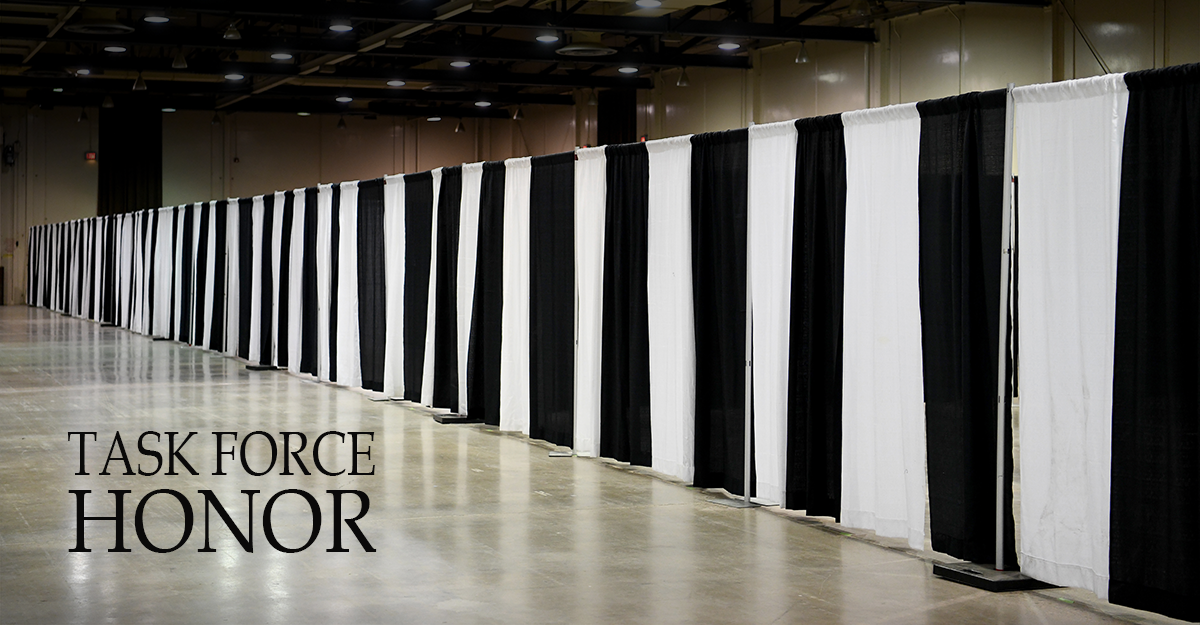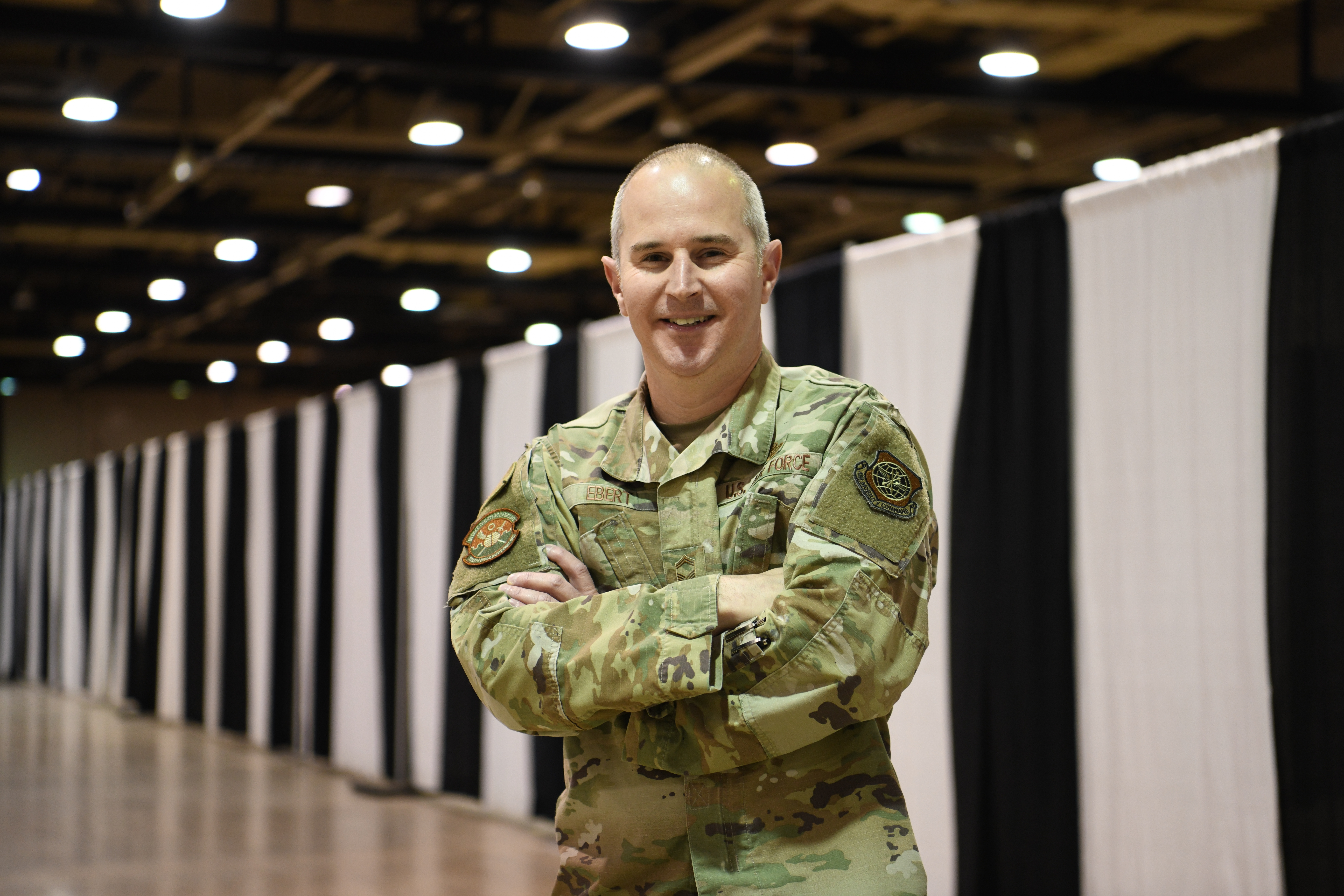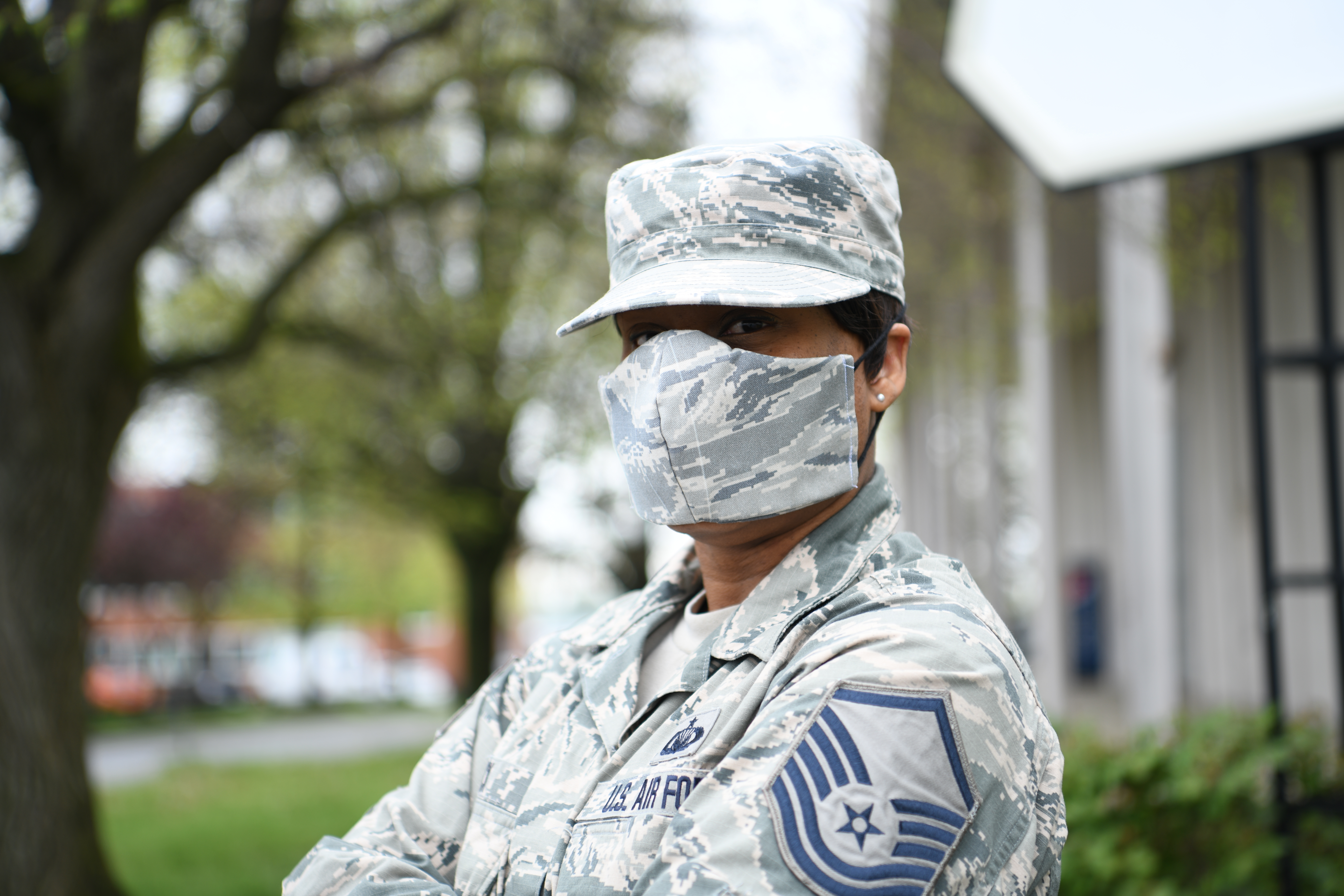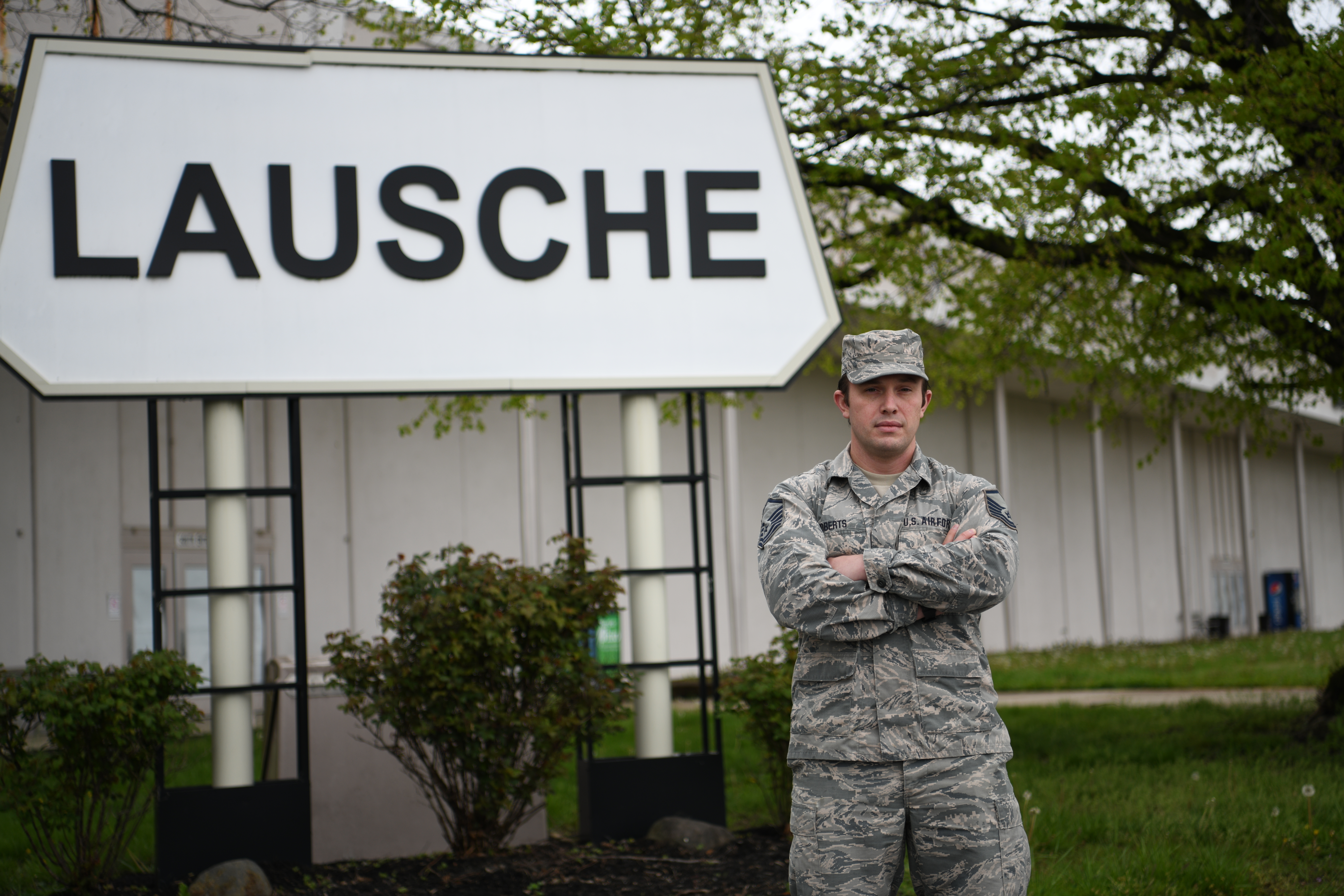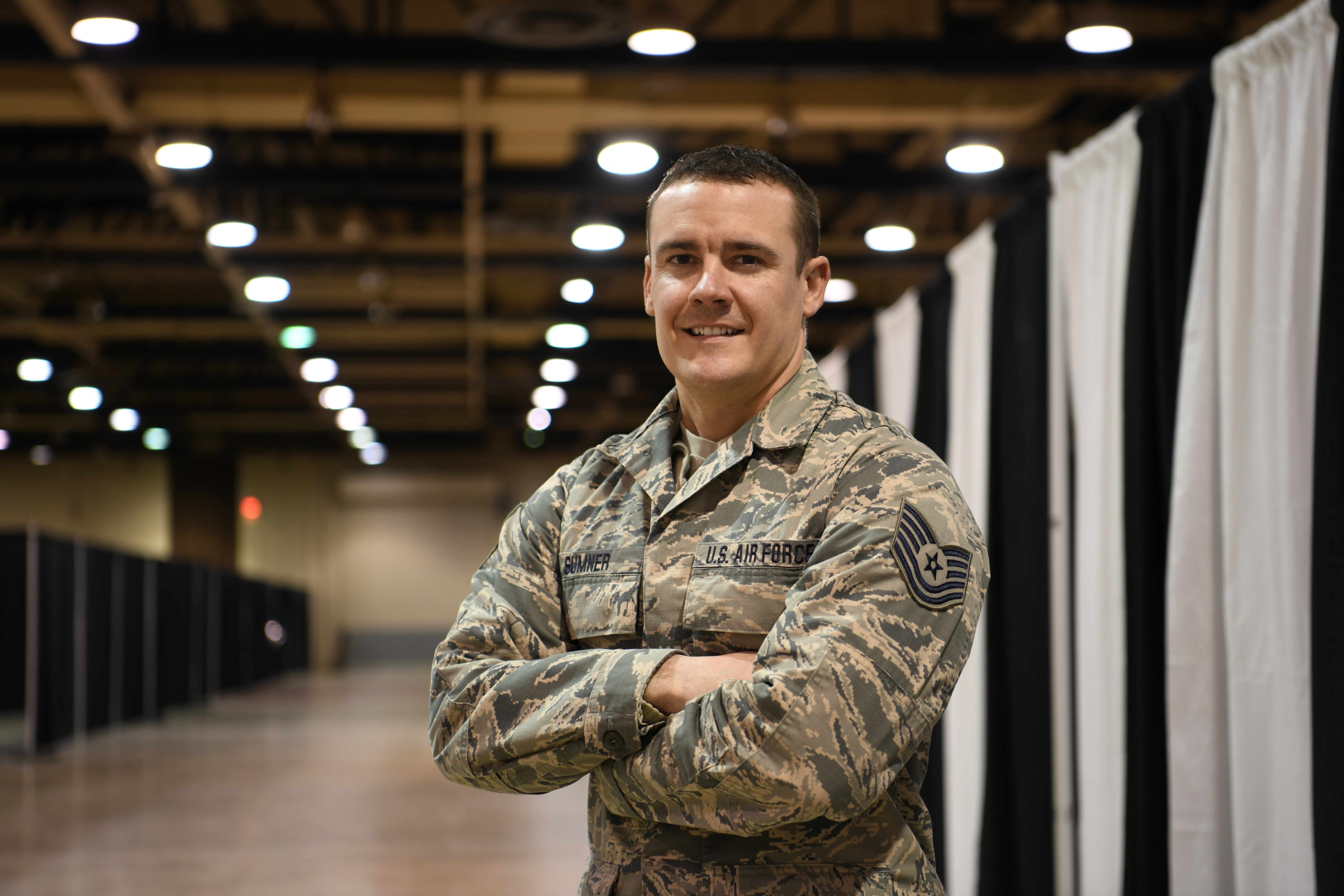Ohio National Guard’s Task Force Honor trained for worst-case scenario during COVID-19 peak
Story by Staff Sgt. Amber Mullen, Ohio National Guard Public Affairs
COLUMBUS, Ohio (05/16/20)
As of May 10, more than 1,200 Ohioans have died from COVID-19, affecting not just the lives of those who have had to say goodbye to their loved ones, but those working in funeral homes and hospital morgues who have the responsibility of caring for those loved ones after death.
In this time of distress and mourning, a specialized team from the Ohio Air National Guard was activated and put on standby to assist these organizations with the dignified transport and respectful care of those who have passed, if the demand came to the point of overwhelming the conventional system. Task Force Honor, the name given to the 35-member team made up of mortuary affairs specialists, chaplains, chaplain assistants, and safety personnel, was activated April 13, at the request of Gov. Mike DeWine to be on standby in the event funeral homes and morgues became overwhelmed during the pandemic.
Of some small consolation during these challenging times, Task Force Honor was thankfully never called for a mission.
“Within a day of being activated, the Airmen had everything set up and we were ready to meet the mission if called upon,” said Senior Master Sgt. Nicholas Ebert, Task Force Honor noncommissioned officer in charge. “We got a lot of good training done over the last three weeks. At the end of the day, it was nice that we didn't have to put this mission into a ready state.”
Task Force Honor members came from all four Ohio Air National Guard wings and operated out of the Lausche Building at the Ohio Expo Center in Columbus, supporting the Ohio Emergency Management Agency (OHEMA) and the Ohio Department of Health.
Receiving an active mission would have meant that COVID-19 was rapidly claiming the lives of citizens, a worst-case scenario for the state of Ohio. With the rapid loss of life, the funeral homes and county morgues would become overwhelmed due to an increased surge in deaths. The Airmen assigned to Task Force Honor were in place to alleviate that increased stress placed on morgues by providing an alternate site to properly care those who had passed, until funeral homes could manage the final disposition.
“It's a sobering feeling,” Ebert said. “Mortuary is a part of our job in (the Air Force services career field) so I’ve had the honor to do this for other fallen military members and their families. I felt privileged to take on this mission if we were called upon to take care of fellow Ohioans.”
The task force consisted of a supervisory element that oversaw the mission, an administrative team responsible for keeping records of remains and facility logistics, a chaplaincy team that set up a resiliency center for the Airmen tasked with the mission, a safety team that was in charge of keeping the building secured, two transportation teams tasked with the dignified transport of remains, and two mortuary teams that were in charge of processing and caring for the remains upon arrival at the facility.
“After the decedent arrived at the facility, we would have taken them off the transport vehicle with dignity and respect,” said Master Sgt. Zach Roberts, Task Force Honor mortuary team lead. “Then carefully inter them here and properly account for all of the necessary information we needed to have about that person while in our care.”
Although the team never received an active mission, the Airmen trained for three weeks in order to be prepared to serve their state. The training consisted of daily instruction and review to ensure they were mission ready. Every week they would run a training exercise alongside their civilian partner agencies to ensure the teams were able to work together effectively.
“OHEMA was very involved in helping and answering any questions we had,” Roberts said. “They helped provide us with clarity on what condition we would have received the decedents, what length of time someone would be in our care, and they gave us a better understanding on how to manage the remains we would have received.”
OHEMA also provided the Airmen with insight on how civilian agencies operate in emergency response situations. While the Ohio National Guard Airmen on mission were supporting the mission, OHEMA’s role was to run the operation and provide the equipment. They used a system called WebEx to track the current cases of COVID-19, deaths from the virus, and locations of the deaths and current cases. This system would have also allowed them to track how many remains were tasked to the mortuary affairs mission being supported by Task Force Honor.
“They really helped us understand (their role), and served as a bridge, to help us better understand the world they work in,” Roberts said. “Our OHEMA partners helped us better understand the civilian-driven emergency response world.”
In this environment, training for missions and understanding the logistics is important, but another aspect the Airmen needed to be prepared for was their spiritual, emotional, and mental needs of potentially coming face to face with death. To address this part of the mission, Task Force Honor had a chaplaincy team in place to support the Airmen standing by for missions.
“Our role was to support the individuals working firsthand on the mission,” said Master Sgt. Camille Mack, a religious affairs Airman assigned to Task Force Honor. “We were here for emotional and spiritual support and also for debriefing. Our job was to ensure the members were cared for and able to process what they were going through and any emotions they may have been experiencing so they could be ready for the next day.”
The chaplaincy team created a resilience center for the Airmen and aimed to provide an environment that allowed the Airmen to decompress. The center had an area for games, a theater, a ministry center that provided a space for prayer, meditation, and religious services, and they provided the Airmen with snacks and coffee.
“Everyone speaks different languages as to what helps them feel better, so we were just trying to provide them with a variety of options to allow them to recharge,” Mack said. “It's an honor to be able to show our members how much we support them and how much our leadership values them. I felt that it was a real privilege to be called upon in a time of need.”
From supporting food banks to providing medical care in prisons, the variety of missions tasked to the Ohio National Guard during the COVID-19 pandemic has been dynamic, unique, and critical. For the more than 900 Soldiers and Airmen activated, being able to help out their local community in a time of need is an essential factor as to why many of them joined the Guard.
“This is exactly what I enlisted for — to be able to serve my community,” Mack said. “Being a part of the response has been a real honor.”
Although the mortuary affairs mission remained in a standby state, Ohio Air National Guard professionals were prepared and ready to respond in order to provide relief to their fellow Ohioans.
